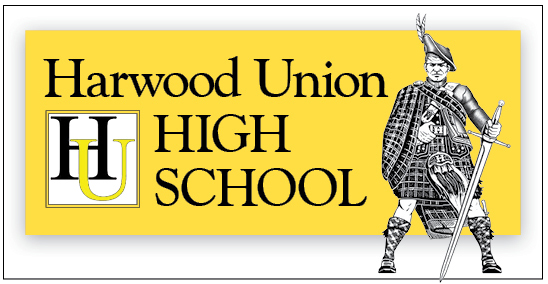UPDATE: HUUSD tables nine configurations
School district leaders are considering nine scenarios featuring three to five elementary schools and one or two middle schools.
The asset management committee (AMC), a subcommittee of the Harwood Unified Union School District (HUUSD) board, has viewed different school configuration models and will be costing out all metrics.
The AMC and Executive Facilities Committee (EFC) have each met separately in the last two weeks to go over a district outline. The EFC met on Wednesday, March 27, at Crossett Brook Middle School (CBMS) to tour the facility and classrooms. The committee includes Superintendent Brigid Nease, director of facilities Ray Daigle, director of finance and operations Michelle Baker, Warren representative Rosemarie White, Fayston representative Tim Jones, Waterbury representatives Alex Thomsen and James Grace, and Waitsfield representative Christine Sullivan.
OPTIONS
Committee members discussed how they would like to proceed with the middle school options. After touring the CBMS facility and classrooms, Grace mentioned that he had devised a working spreadsheet with nine school configurations for the district. His spreadsheet shows nine options. Option 1 has no change from the current configuration of two middle schools and five elementary schools. Option 2 has one middle school and five primary schools. Option 3a has two middle schools and four primary schools, turning Waitsfield Elementary into a Valley middle school with grades six to eight. Option 3b has two middle schools and four primary schools with Waitsfield becoming a Valley middle school for grades five to eight. Option 4 shows two middle schools and three primary schools, eliminating Waitsfield and Fayston elementary schools with Waitsfield becoming a middle school. Option 5 shows one middle school at CBMS and four primary schools excluding Fayston elementary.
Option 6a has one middle school at CBMS and three primary schools, excluding Moretown and Fayston elementary schools. Option 6b has one middle school at CBMS and excludes Waitsfield and Fayston primary schools. Option 7 has one middle school at CBMS with sixth through eighth grades, with Waitsfield and Thatcher Brook Primary School (TBPS) being the only elementary schools and Fayston, Moretown and Warren elementary schools closed. Option 8 has one middle school at CBMS and does not specify an elementary school configuration. Option 9 focuses on pre-K and after-school care dedicated at the Moretown building. Next the committee decided they hope to present at an April meeting to the entire board and get to a point where they could involve the architects again.
The next step procedurally is to review options and come up with questions for each option before going back to the administrative team, which can list why options work or don’t.
Daigle said that it would be impossible to turn an elementary school in The Valley into a dedicated middle school as there are not enough playing fields for sports, no science labs for middle school standards, no room to grow septic or wells, and the bathrooms are built for young children. The main concerns for facilities in The Valley include septic, school wells, parking, staffing, recreation field space and a gym.
Currently, Moretown and Waitsfield elementary schools do not have working cafeterias; their meals are transported to them through a contracted service.
Jones asked what is lacking in the Harwood Union Middle School (HUMS) compared to CBMS. Jones wanted to counter the negativity associated with HUMS. Nease explained some differences including scheduling conflicts with HUMS and HUHS with electives and arts. Nease added a difference in programs such as sustainability and STEM, and access to sporting fields and gym time for after school between the two middle schools.
Nease recommended costing out a no-cost option and seeing the impact for grades seven and eight to come to CBMS to create something measurable. Sullivan said that the committee needs to look at the tax rate going forward, look at the build and bond cost, transportation cost and savings, and voiced her concern with political resistance from the board.
After working with the admin team and presenting to the full board, a re-evaluation of the scope of the work for the EFC would be done.
ASSET MANAGEMENT
The asset management committee met on Wednesday, April 3, to review what questions they should be asking in order to get to a bond vote.
The group outlined specific questions and identified themes such as maximizing value for students, social and emotional well-being, transitioning impacts, idea configurations and decision criteria.
The AMC, comprised of Sullivan, Nease, Baker, Grace, Waterbury representative Maureen McCracken and Fayston representative Theresa Membrino, reviewed goals and timeline work, as well as affirmed specific metrics they would look at in each district configuration plan.
Membrino and Grace had working spreadsheets with different metrics; the pair compared the spreadsheets and decided the most important qualities were construction renovation costs, operations cost impact (5- to 10-year level service budget for comparison), impact to staffing, travel impact, community perspective, administrative perceptive, as far as staffing, configurations, classrooms, tax rate impact, enrollment per building and debt service impact.
In the meeting, committee members added the importance of transparency and clarity, engaging more people in the conversation and reaching the broader community. By creating criteria, data, benefits and possibilities to the process, the committee hopes to gain specificity with the current scope.
The committee members finalized the criteria and agreed that it might not be possible to collect or evaluate for each data point in all scenarios but agreed they could rule out scenarios based on a deal-breaker. A deal-breaker would include lack of septic capacity or land for expansion.







